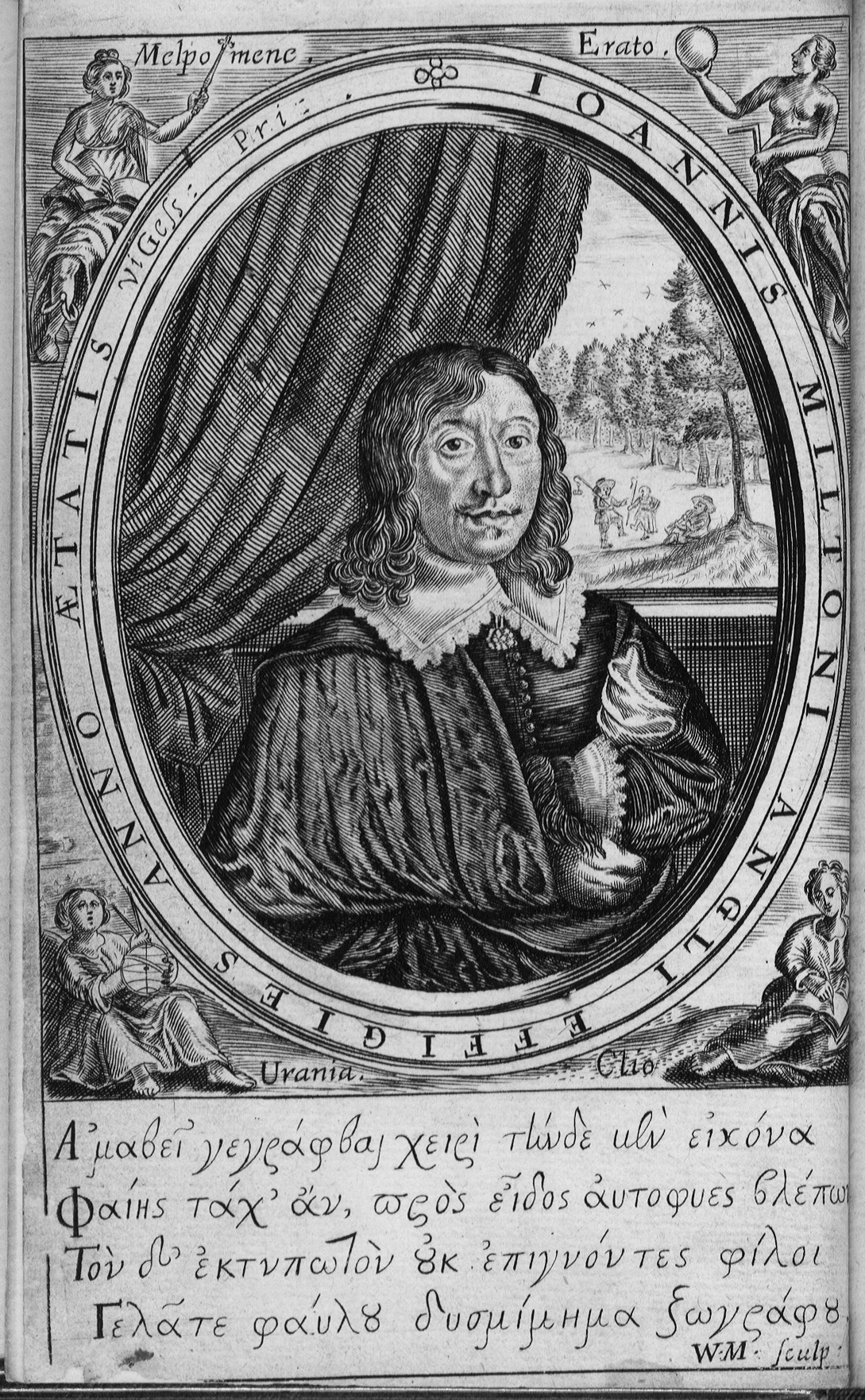
Frontispiece. This engraved frontispiece appears just opposite the title page of Poems of Mr. John Milton (1645). The frontispiece does not appear in the 1673 edition of the Poems, but Milton included the Greek lines as a separate item (In Effigiei eius Sculptor) in that edition. William R. Parker (289) says that Humphrey Moseley, his printer, insisted Milton commission an engraved likeness for the frontispiece and Milton placed himself at the mercy of William Marshall, one of the most prolific English engravers of the day. Marshall had done a portrait of John Donne at age eighteen (Donne's Poems 1635) and later did the frontispiece to Charles I's Eikon Basilike (1648). For whatever reason, Marshall's engraving of Milton, as one can readily see, is appalling; it makes Milton's right eye appear swollen, his hair stringy, his nose enormous, and his lips puckered. Instead of refusing to use the portrait, Milton had Marshall engrave these Greek lines under the portrait. Presumably, Marshall could not read Greek.
The engraving depicts Milton in what amounts to Marshall's stock studio pose, almost as if he had simply put Milton's face on a conventional torso in a set background. Around the oval border are the words "IOHANNIS MILTONI ANGLI EFFIGIES ANNO ÆTATIS ViGess: Pri:" which translates as "John Milton, Englishman pictured at age twenty-one." The portrait was actually made in 1644 or 1645, and it looks far more like a man of thirty-seven than twenty-one. It was common for first volumes of poems to be preceeded by a portrait of the poet as a young man, and that was probably Moseley's idea here, but Marshall, for some reason, did not cooperate by making Milton look sixteen years younger. Around the outside of the oval portrait we find formulaic depictions of four muses: Melpomene, patron of tragedy and lyre playing, Erato, patron of lyric and erotic poetry or hymns, Urania, patron of astronomy, and Clio, patron of history. This copy was taken from Hickmott 172 in The Rauner Special Collections Library at Dartmouth College and is reproduced here slightly larger than the original (3.625 X 5.625 inches).





